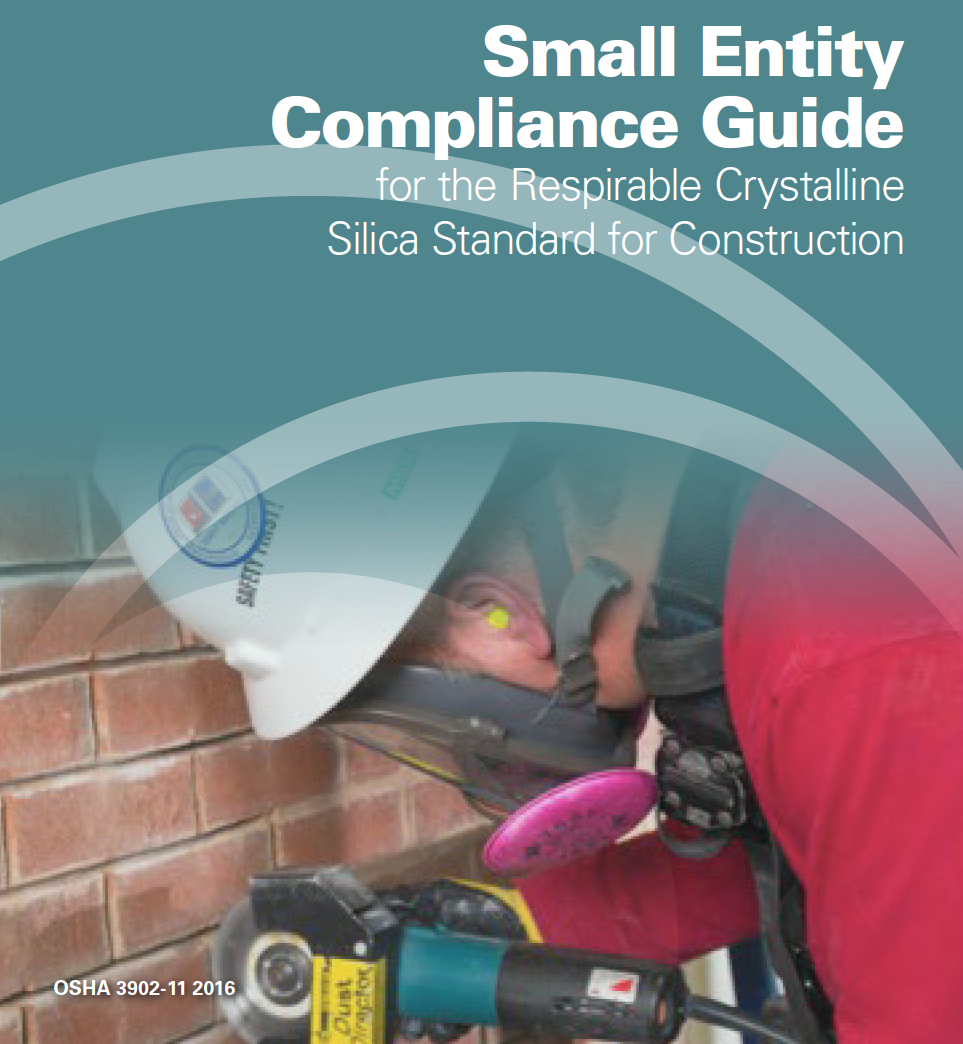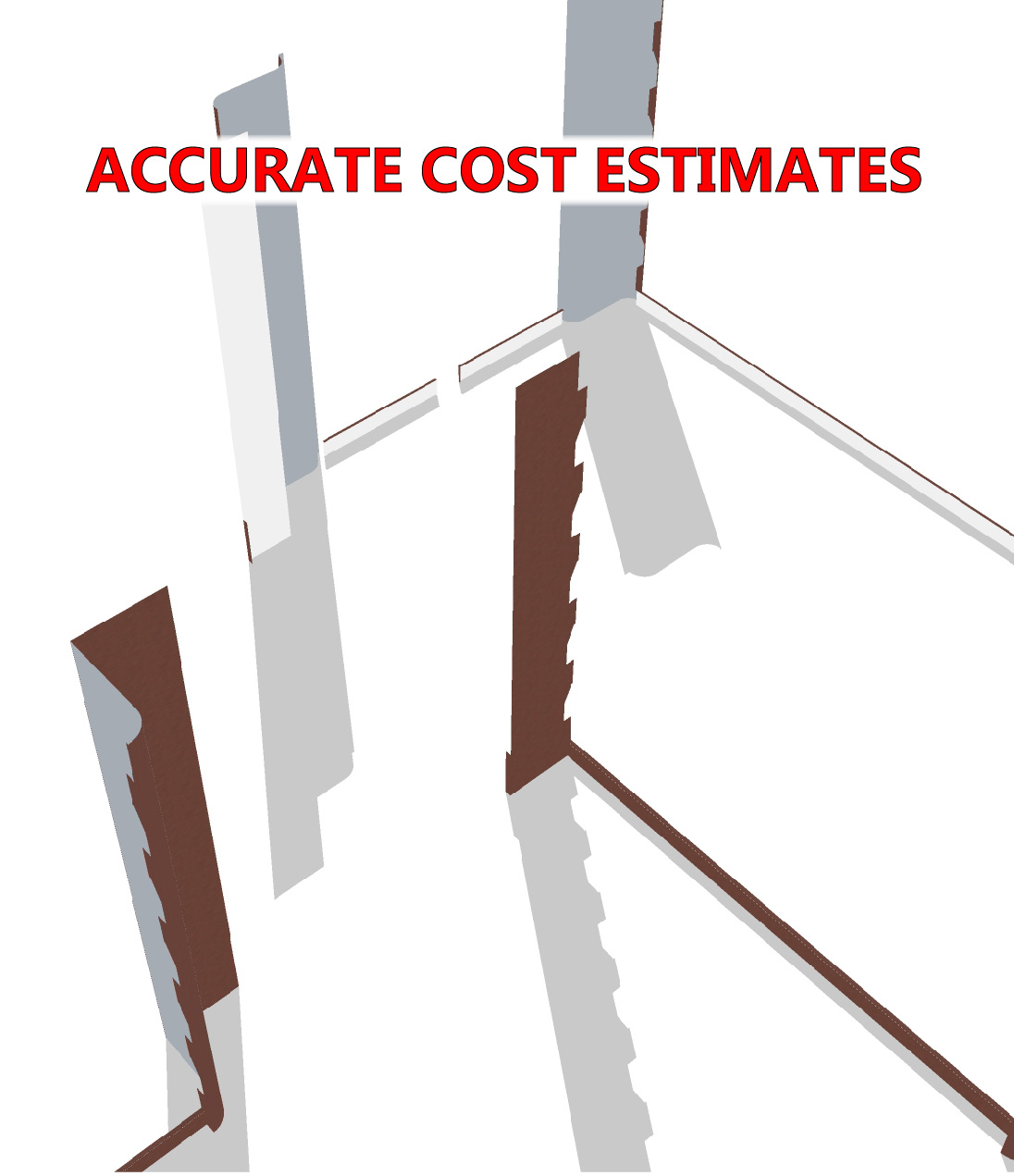Safety
Rob Crimmins, now of JVS Building Services, the owner of this website, was the operations manager and later President of a restorations contracting firm. Before that he had extensive experience working under hazardous conditions on restorations crews, construction sites, aboard ship, in the Iraq and Afghanistan war zones, in oil refineries, cleaning windows, supervising skydiving operations, building experimental aircraft and climbing towers. He’s also an engineer and he wrote the restorations company’s safety manual, which is based on the OSHA guidelines as put forth in the OSHA Small Business Handbook.
Keeping workers, building occupants and the public safe during commercial building restorations projects in the manner suggested by OSHA is the purpose of the manual. Many of the links and information on this page were collected and referred to as the safety manual was being prepared.

Accident Reports and Videos
Dropped Tape Measure Kills Worker
Gary Anderson, of Somerdale, NJ was delivering wallboard to a 50 story construction site when a tape measure, dropped from 400 feet above, struck his head. Mr. Anderson had a hard hat in his truck. He may not have put it on because he wouldn’t necessarily have to enter the building to make the delivery. Simply being on a site where overhead work is underway is hazardous. Mr. Anderson was a long time employee for New York-based trucking company George Hildebrandt Inc. According to them, “He was a very good worker”. Mr. Anderson, 58-years-old, passed away in the hospital shortly after the accident with his wife and daughter at his side.
Electrocuted Worker Post Mortem
The subject of this video is an accident in which a young man servicing a scissor lift raised the platform close enough to a 25 KV power line for “flashover” to occur. This is a high-voltage short circuit made through the air between exposed conductors. In this accident the worker, who became the upper end of the lower conductor, was killed.
OSHA Fatal Facts
“Fatal Facts” describe cases that are representative of employers who failed to identify and correct hazardous working conditions leading to fatalities at their worksites. The documents offer ideas on how to correct these hazards and educate workers about safe work practices.”
Owner and manager face manslaughter charges in worker’s deadly fall
This SafetyNewsAlert.com article is about a worker who fell from a makeshift scaffold. His foreman is reported to have known what had been done to accomplish the task and that the worker, who wasn’t using fall protection, had not received training on how to avoid and protect himself from falls.
For a company manager to have been charged with manslaughter, which was the case according to this report, the violation was probably “willful”, according to OSHA’s penalty structure. This EHS Today article offers very relevant background information on that legal designation and the others (which are “other than serious” and “serious”).
Unguarded balcony, lack of fall protection cause death of Dallas construction worker, OSHA finds
One in five private industry worker deaths in 2014 were in construction. Falls are the leading cause of death for construction workers, accounting for nearly 40 percent of 2014’s construction fatalities. Texas leads the nation in construction fatalities. This accident, which occurred on May 14, 2015, is the second egregious case involving falls in Houston in recent months.
Worst Industrial Accident in American History
At least 764 of the 1,213 men who worked underground at Hawk’s Nest in West Virginia in the years 1930 and 1931 for at least two months died within five years of the tunnel’s completion. As many as 2000 men have lost their lives as a result of inhaling dust while digging the tunnel which eventually carried the New River through Gauly Mountain.
Aerial Lifts
Worker launched from aerial lift basket – video
Remember that when traversing curbs the vertical motion on the basket, and therefor the operator, is a multiple of the height of the curb. A sudden drop from even a fairly low height can cause an operator to lose his footing, or worse. This video depicts an event that was much worse.
Fatal Injury Rate for Mobile Elevating Work Platforms (MEWP) Remains Constant
The International Powered Access Federation (IPAF) reports that for 2015, rented machines were operated for 192.2 million days and the number of reported MEWP fatalities was 68. That yields a fatal injury rate of 0.035. The main causes for the fatalities were falls from height, which accounted for 31%, overturn – 27%, electrocution – 15% and entrapment – 15%.
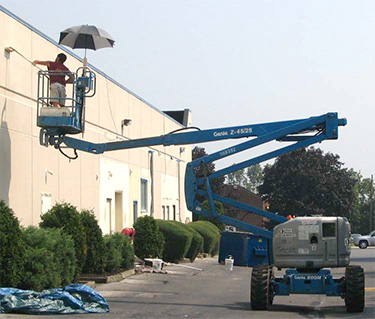
Electrocuted Worker Post Mortem
A young man servicing a scissor lift raised the platform close enough to a 25 KV power line for “flashover” to occur. This is a high-voltage electric short circuit made through the air between exposed conductors. The worker was the upper end of the lower conductor and was killed.
Associations
American Society of Safety Engineers
The American Society of Safety Engineers (ASSE) was founded in 1911. ASSE provides professional development and standards development and serves as an advocate for safety engineers around the world.
Bidder / Contractor / Vendor Qualification
Avetta (formerly PICS Auditing)
Avetta is a subscription software provider. Their SaaS, cloud based product connects a companies suppliers, contractors and vendors in order to mitigate risks to workers and the business. Their product is “a supply chain risk management solution”.
White Papers
Mostly case studies on implementing Aveeta’s software but there are also papers on dealing with OSHA, vendor pre-qualification and loss control tips. Articles on risk mitigation and safety issues are also on Avetta’s blog.
Contractor Safety Prequalification, Current Practices and Prospective Models
This March, 2008, University of Utah Economics Department Working Paper (No. 2013-07) by Peter Philips and Norman Waitzman is the 282 page report on an exhaustive study on the economics of pre-qualifying contractors based on their safety record. Firms such as those listed below are providing services based on the principles outlined in this and other studies.
FIRST, VERIFY Vendor Information Management
FIRST, Verify maintains a database that allows companies to verify that outside contractors doing everything from new construction to routine maintenance meet corporate standards for safety and other criteria. The service associated with this proprietary database is “FV-PQ Web Application”. Their other services include: “Certificate Management Service” , “Safety Audit Service” and “SMI Safety Staffing and Consulting”.
Intelivert
Itelivert offers cloud based tools for managing workplace safety, training, compliance and quality control. Their workforce qualification service ensures that the contractor’s safety record meets the minimum requirements and one of their follow-up services provides site specific training to the contractor’s workers.
Fall Protection
OSHA has developed this webpage to provide useful, up-to-date information to workers and employers on fall protection. Falls, despite being completely preventable, are among the most common causes of serious work related injuries and deaths.
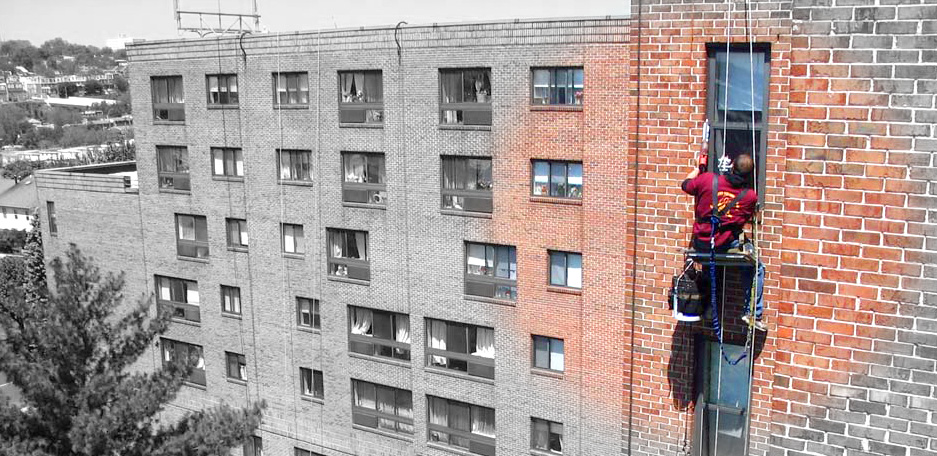
Horizontal Lifelines
Horizontal-Lifelines.com
Many kinds of fall arrest solutions on a site that’s a little tricky to navigate but quite comprehensive. It has to be used in conjunction with their online store: http://www.horizontal-lifeline.com/store The two together are a source for a very long list of components, systems and services.
Horizontal Lifeline Systems by Miller Fall Protection, Inc.
Kee Safety, Inc.
Personal and collective fall protection products: rooftop guardrail, rooftop walkways and engineered lifeline systems, including many that require no rooftop penetrations.
Single Point Adjustable Scaffold / Bosun’s Chair Operating Guide – OSHA
This “eTool” is OSHA’s guide for setting up and operating single point adjustable suspended work platforms. Bosun chairs are in this category.
First Aid
First Aid Best Practices Guide – OSHA
Fundamentals of a Workplace First-Aid Program
General Safety Information
EHS Today
EHS Today, formerly known as Occupational Hazards, reports on management strategies, regulatory news and new products for safety, health and industrial hygiene professionals in the manufacturing, construction, and service sectors.
Behind the Bradley Curve
This article in EHS Today by Terry L. Mathis, Founder and CEO of ProAct Safety draws on Stephen Covey’s book, The Seven Habits of Highly Effective People to point out how a safety culture can be developed by facilitating the progression from dependence on others to independence and finally interdependence.
RSBR Safety Manual
Rodney Square Building Restorations, Inc. is a small, highly regarded commercial building restorations firm from Wilmington, Delaware. Rob Crimmins, now of JVS Building Services, the owner of this website, was the operations manager of “RSBR” and later President of the firm. Before that he had extensive experience working under hazardous conditions on restorations crews, construction sites, aboard ship, in war zones, in oil refineries, cleaning windows, building experimental aircraft and climbing towers. He’s also an engineer and he wrote the company’s safety manual, which is based on the OSHA guidelines as put forth in the OSHA Small Business Handbook. Keeping workers, building occupants and the public safe during commercial building restorations projects in the manner suggested by OSHA is the purpose of the manual.

SafetyNewsAlert.com
OSHA News, safety training, injury and fatality reports, workers compensation information, safety statistics and research, “cost of safety”, safety books and publications.
Top Ten OSHA Fines in 2016
These are the top 10 OSHA fines Safety News Alert wrote about in 2016.
Harnesses
CMC / Roco FreeTech™ Harness
This figure-8 style fall protection harness provides a means for the user to reorient into a seated position which transfers their body weight from the dorsal connector on the upper back to the front waist location of the harness. Doing so gives the wearer who is awaiting rescue increased freedom and mobility, which may help delay the onset of orthostatic intolerance, also referred to as suspension trauma.
Hazard Analysis
Hazard Awareness Advisor – OSHA
This is an application that poses a series of questions about the facility and work activities to create a list of safety concerns. The applicable regulations are listed. Suggestions on actions that should or could be taken are also provided in the list that the application generates.
Job Hazard Analysis – OSHA
All work locations and each work activity need to be evaluated for hazards. Sites in urban environments or at locations that require long drives include hazards that jobs nearby don’t. Likewise, pressure washing a tall building and restoring sealant in a parking deck are two activities with different hazards. Therefore, each site and each activity needs to be evaluated individually and every time they are encountered. Site rules need to be established.
OSHA’s Severe Injury Reporting Program – Year One
Effective Jan. 1, 2015, by law, employers must report to OSHA within 24 hours any work-related amputation, in-patient hospitalization, or loss of an eye. The requirement to report a fatality within 8 hours had been in effect previously. Some very interesting and useful facts are presented in this report from OSHA on the first year’s data. Perhaps chief among them for those who are involved with commercial building restoration is that the NAICS (North American Industry Classification System) Title that filed the most “Severe Injury Reports” in the first year of the requirement was #2381, “Foundation, Structure, and Building Exterior Contractors”. The other Titles in the top five were Building Equipment Contractors (NAICS Title 2382), Support Activities for Mining (NAICS Title 2131), Nonresidential Building Construction (NAICS Title 2362). and Postal Service (NAICS Title 4911).
Risk Management Handbook
This handbook is a tool designed to help recognize and manage risk. It provides a higher level of training to the pilot in command (PIC) who wishes to aspire to a greater understanding of the aviation environment and become a better pilot. This handbook is for pilots of all aircraft from weight-shift control (WSC) to a Piper Cub, a Twin Beechcraft, or a Boeing 747.
Succeed Management Solutions, LLC
Services and tools that improve efficiency and manage risk. It began as an occupational safety and health consulting firm and came to automate those functions and others including OSHA 300 reporting tools, safety compliance tools, risk management tools and libraries, hazard analysis, onsite risk assessment and more. Going through their website provides insight into risk management in general and what to look for in companies that provide insurance and related services and products. Their Certificate of Insurance maintenance application is a stand alone software solution for handling that important matter.
U.S. DOD Hazard Assessment Form dd2977
“Deliberate Risk Assessment Worksheet” for military operations
Ladders
Idiots On Ladders
The Ladder Association, a member of the Access Industry Forum (AIF) holds a contest each year for the best picture of the worst example of ladder use. This page has from EHS Today has twelve pictures from 2015 of men misusing ladders and substituting other miscellaneous items for them.
Ladders Use and Construction – OSHA
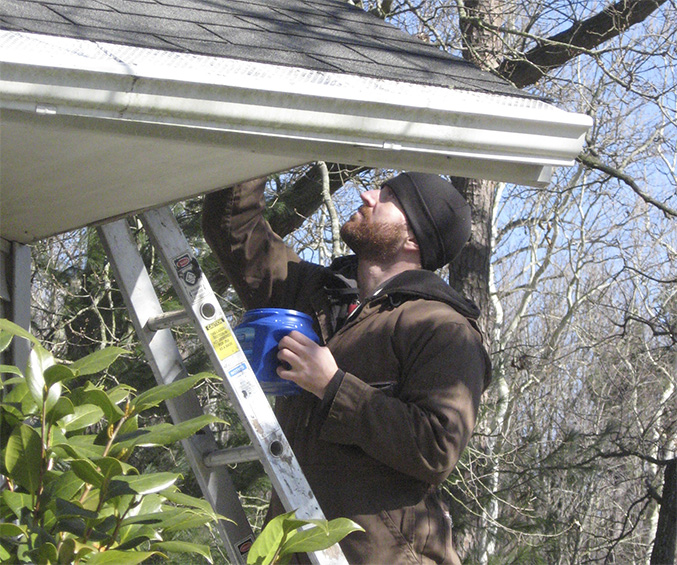
OSHA
16 Legal Tips: Handling OSHA Citations the Right Way
Sixteen lawyers weigh in with valuable tips for dealing with OSHA citations with emphasis on the latest policies OSHA is following based on new enforcement and penalty laws.
OSHA Small Business Handbook
In this handbook OSHA calls for four basic elements that constitute a good safety and health program for any business. These are:
1. Management Commitment and Employee Involvement. The manager or management team leads the way, by setting policy, assigning and supporting responsibility, setting an example and involving employees.
2. Worksite Analysis. The worksite is continually analyzed to identify all existing and potential hazards.
3. Hazard Prevention and Control. Methods to prevent or control existing or potential hazards are put in place and maintained.
4. Training for Employees, Supervisors and Managers. Managers, supervisors and employees are trained to understand and deal with worksite hazards.
The Four-Point Workplace Program described here is based upon the Safety and Health Program Management Guidelines issued by OSHA in January 1989. Although voluntary, these guidelines represent OSHA’s policy on what every worksite should have in place to protect workers from occupational hazards. The guidelines are based heavily on OSHA’s experience with its Voluntary Protection Programs (VPP), which recognize excellence in workplace safety and health management.
OSHA’s Top Ten Violations of 2015
Commercial building restorations project managers will be interested in this EHS Today article because it says that three of the top ten most cited violations are for unsafe practices in the activities that restorations contractors have to engage in daily. The top most cited violation is for practices related to fall protection, OSHA Part 1926.501. The other two are Scaffolding (1926.451), which is number three out of ten and Ladders (1926.1053). Violations in the use of ladders is the seventh most common out of ten. Managers, consultants and everyone else associated with the project should keep this list in mind as they observe operations.
Silica Dust Protection Final Rule
OSHA has issued a final rule to curb lung cancer, silicosis, chronic obstructive pulmonary disease and kidney disease by limiting worker’s exposure to respirable crystalline silica. The rule is comprised of two standards, one for Construction and one for General Industry and Maritime. Both standards contained in the final rule take effect on June 23, 2016., after which industries have one to five years to comply with most requirements, based on the following schedule:
Construction – June 23, 2017, one year after the effective date.
General Industry and Maritime – June 23, 2018, two years after the effective date.
Hydraulic Fracturing – June 23, 2018, two years after the effective date for all provisions except Engineering Controls, which have a compliance date of June 23, 2021.
Voluntary Protection Programs Participants Association
VPP – Voluntary Protection Programs
All About VPP on OSHA’s site
Approval into VPP is OSHA’s official recognition of the outstanding efforts of employers and employees who have achieved exemplary occupational safety and health.
Voluntary Protection Programs Participants Association
Personal Protective Equipment
PPE Personal Protective Equipment Guide – OSHA
Hazard assessment, PPE selection, eye and face protection, head protection, gloves, various forms of body protection, hearing protection and sound limits, and sources of assistance from OSHA are covered.
PPE Fact Sheet – OSHA
OSHA requires employers to assess the hazards in their workplaces, provide workers with the appropriate protective equipment and require them to maintain it in a sanitary and reliable condition. In addition to describing the function of the various categories of protective equipment this fact sheet points out that Personal Protective Equipment is generally the final element protecting a worker from injury. If engineering and administrative controls are in place and if effective training is conducted many types of protective equipment can be a back-up that’s never put to the use for which it’s worn.
Pressure Washing
High Pressure Cleaning (On Shore) – OSHA
This site includes a list of the dangers associated with using water under high pressure for cleaning and the employers responsibilities to the worker. Those responsibilities listed are “1. The training you need to safely do this task. 2. The work practices you need to use to avoid getting hurt or sick. 3.The protective clothing and equipment you need when doing this job and 4. How to report any health and safety hazards, illnesses and injuries.”
Safe Use of Ultra-High-Pressure Waterjetting
This paint square.com / JPCL (Journal of Protective Coatings and Linings) article addresses the safe use of jets from water pressure that exceeds 30,000 psi for industrial cleaning and surface treatment. These pressures significantly exceed those used for cleaning buildings but many of the precautions cited here have direct application to the use of equipment that uses less pressure.
Pressure Washing Safety Tips – Mi-T-M Corporation
Mi-T-M Corporation is a manufacturer of quality pressure washers and accessories. This page includes a list of precautions and a video to demonstrate how to use a pressure washer safely.
Recordkeeping
Recordkeeping Advisor – OSHA
This is an application that poses a series of questions about the facility and work activities to create a list of records that should be maintained. The applicable regulations are listed. Suggestions on actions that should or could be taken are also provided in the list that the application generates.
Respiratory Protection
(OSHA) Respirable Crystalline Silica standard for Construction
Enforcement of OSHA’s new respirable crystalline silica standard for construction will begin in June of 2017. This document is their new compliance guide for small construction businesses. Silica dust can cause silicosis and lung cancer, and can be a hazard in abrasive blasting, grinding and other restorations work. The guide points out that 50 micrograms per cubic meter, averaged over an eight-hour shift is an unacceptable level of exposure. Tables in the guide specify which types of respirators (none, APF10 and APF 25) are required for different types of work.
Risk Management and Insurance
Risk management is an important and complicated subject (ask George Constanza) that overlaps safety. Insurance is no less significant to those managing a commercial building restorations project. This page is by no means a comprehensive source for information on either subject but if each link there is pursued beyond a cursory level a fairly thorough comprehension of both areas could result.
U.S. Army Risk Management Matrix
Once understood, this very detailed guide can be a helpful tool when assessing risk.
Roof Anchors and Tie-backs
American Anchor
American Anchor designs, manufactures and installs roof anchors and other fall protection components and systems.
Tie-back to Non Dedicated Structures
Roof anchors installed for the purpose of securing suspended scaffolds do not exist on many recently constructed buildings and they are nearly nonexistent on buildings built before1990. OSHA regulations for securing life lines and tie-backs take this fact into account. This page is about that, and is of value to building owners who may be concerned about how and if contractors are in compliance.
Safety Glasses
SafeVision, LLC
Prescription safety glasses for work and sport.
Safety Programs
Intelivert
Itelivert offers cloud based tools for managing workplace safety, training, compliance and quality control. Their workforce qualification service ensures that the contractor’s safety record meets the minimum requirements and one of their follow-up services provides site specific training to the contractor’s workers.
Scaffold and Access Industry Association (SAIA) Training
Scaffolds
Supported scaffolds consist of one or more platforms supported by outrigger beams, brackets, poles, legs, uprights, posts, frames, or similar rigid support. Because frame scaffolds are the most common type of supported scaffold, this eTool uses the Frame module to describe requirements that are common to all supported scaffolds. Requirements specific to the other types are described only in their respective modules.

Swing Stage Scaffold Operating Guide – OSHA
This “eTool” is OSHA’s comprehensive guide for setting up and operating swing stage scaffolds.
Unique Rigging Applications for Suspended Scaffolding
Solve complicated rigging application challenges in multiple projects. Learn from examples and case studies on tank rigging, structural steel bridges, dams, angled wire ropes and rigging stars. Participants will be eligible to receive credit from SSPC.

